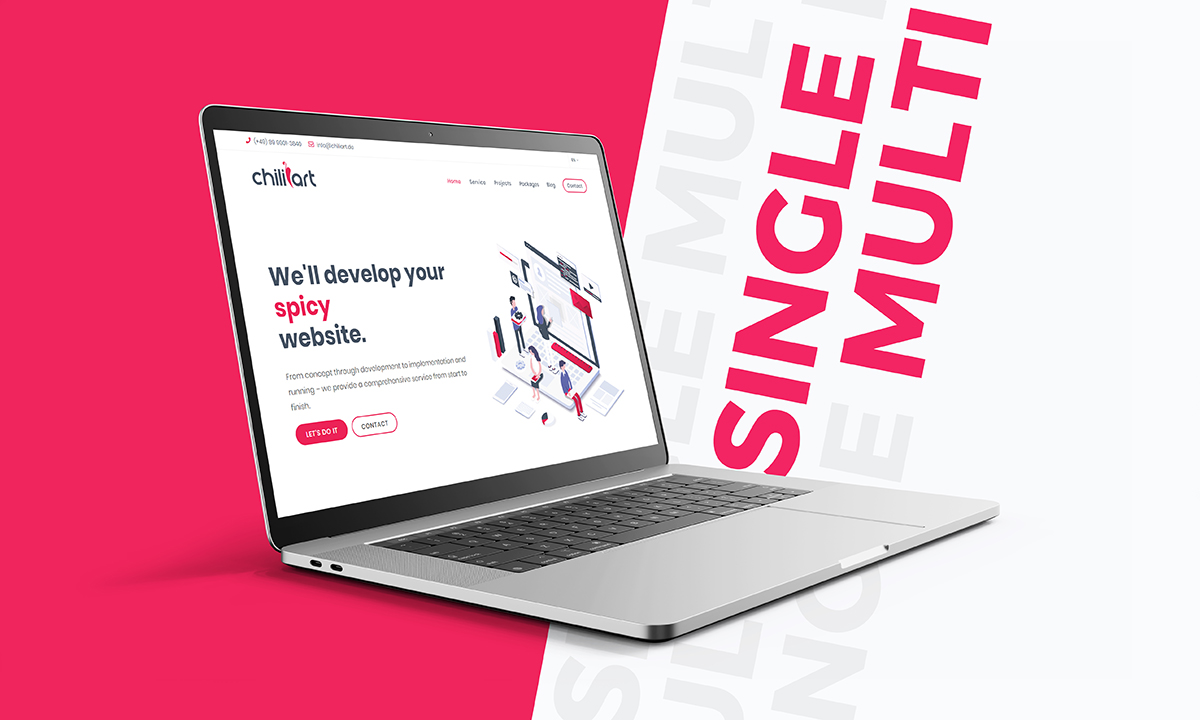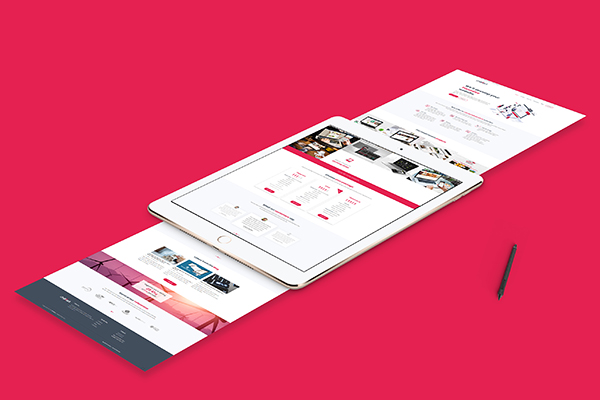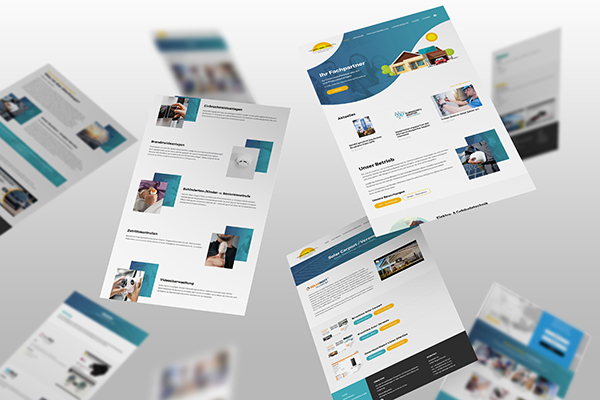Single-Page or Multi-Page Website: What is the Right Choice for Me?

Choosing the right design for your new website is always a tricky thing. Eventually, it’s what often turns your visitor into your customer. With that in mind, the design world is crowded with lots of design patterns, themes, and ideas, which makes your task of selecting the right one even harder. Luckily, there are specialized agencies that can provide a lot of help and make your mission of creating a perfect website for you and your business a lot easier.
Today, even though we’re talking about millions of websites, practically each one of them is constructed and designed in one of two dominant structures – single or one page or multi-page websites. And, just like anything on this planet, both of them have their pros and cons. With that in mind, we’ll try to point out the advantages and disadvantages of each of them, hoping that it will ease the process of choosing the right one for you. So let’s dive in.
The Onepager
The name pretty much sums up and explains itself. One-page website or “one-pager” is a website that contains a single HTML document. There are no links to other pages on your site because there aren’t any. The entire layout is divided into sections, and by clicking on a navigation bar at the top or only by scrolling down, sections become visible.
 Onepager has its benefits. With its minimalistic design and carefully selected content, it often creates a lot better UX or user experience. It’s a lot more intuitive because it has a logical structure, and each section and content inside it follows a logical order. Visitors are not crowded with tons of information that sometimes is irrelevant for them. It’s like reading a book - it has its beginning, middle, and end, often with becoming your customer or subscriber. Having that in mind, it’s no surprise that one-pagers have the most significant conversion rates, more than 37%!
Onepager has its benefits. With its minimalistic design and carefully selected content, it often creates a lot better UX or user experience. It’s a lot more intuitive because it has a logical structure, and each section and content inside it follows a logical order. Visitors are not crowded with tons of information that sometimes is irrelevant for them. It’s like reading a book - it has its beginning, middle, and end, often with becoming your customer or subscriber. Having that in mind, it’s no surprise that one-pagers have the most significant conversion rates, more than 37%!
But, as we stated above, not everything is milk and honey. One-pages websites have several disadvantages and flaws, with, being highly specialized is one of them. They aren’t big on SEO (Search Engine Optimization). They could hurt your chances of ranking with Google and result in decreased conversions and user engagement. With so little content, target keywords often get neglected. Moreover, siloing, or the practice of structuring your website by main areas of interest to demonstrate authority in those areas is a no-go. The good news is that there are workarounds, such as using the expandable div to include descriptions and additional imagery.
Another downside is that one-page websites are practically limited. They tend to have a narrow focus and therefore are not well-suited for websites that require large, complex, and varied use of content.
Finally, consider the fact that you’ll only have one URL to work with. It might not seem like a big problem, but how about when you want to track a link in Google Analytics or share something on social media? Remember, every link counts!
The Multi Pager
Multi-page websites or “classic ones” are, on the other hand, consisted of many HTML documents that are connected through links. If you click a link on one page, it redirects you to another page and so on. This type of traditional design is often used when you want to present a lot of content. Only the size and space on your server and hosting may limit you. However, even though limitations are slim to none, you have to be careful. Lots of content often can confuse your visitors, thus downgrading user experience.
 Websites with several pages have powerful SEO capabilities, way bigger than one-pagers. Although the SEO potential of each site heavily relies on your digital marketing strategy, just having the content potential to optimize your SEO is a great start. Finally, this type of website has been around since the 90s, almost 30 years, which means that most users are familiar with it, and often expect to find multiple pages on sites.
Websites with several pages have powerful SEO capabilities, way bigger than one-pagers. Although the SEO potential of each site heavily relies on your digital marketing strategy, just having the content potential to optimize your SEO is a great start. Finally, this type of website has been around since the 90s, almost 30 years, which means that most users are familiar with it, and often expect to find multiple pages on sites.
However, there are a few disadvantages to take into account. If anything stabilizes or improves your website ranking on search engines, it’s the quality and updated content. And maintaining or updating it on hundreds of pages can quickly become a living nightmare.
Another disadvantage is that websites with massive amounts of irrelevant content are often slow-loading, distracting, and cause users to leave. They have a lower conversion rate.
Finally, the multi-page design is harder to adapt to mobile. We’re not saying they aren’t mobile-friendly, but unlike single page sites, where the same backend code can be used to develop the mobile site, multi-page designs need to be started from scratch to produce the mobile version. It is often not only money and time-consuming, but you risk losing design consistency across the web and mobile platforms.
One way or another, there is no universal rule that can be applied when choosing your website’s design. As presented, you simply have to consider numerous factors. Take your time, set up priorities, compare the pros and cons, and then decide whether one-pager or multi-pager better suits your needs. And if you need professional help, don’t hesitate to contact us, we’re there for you!





